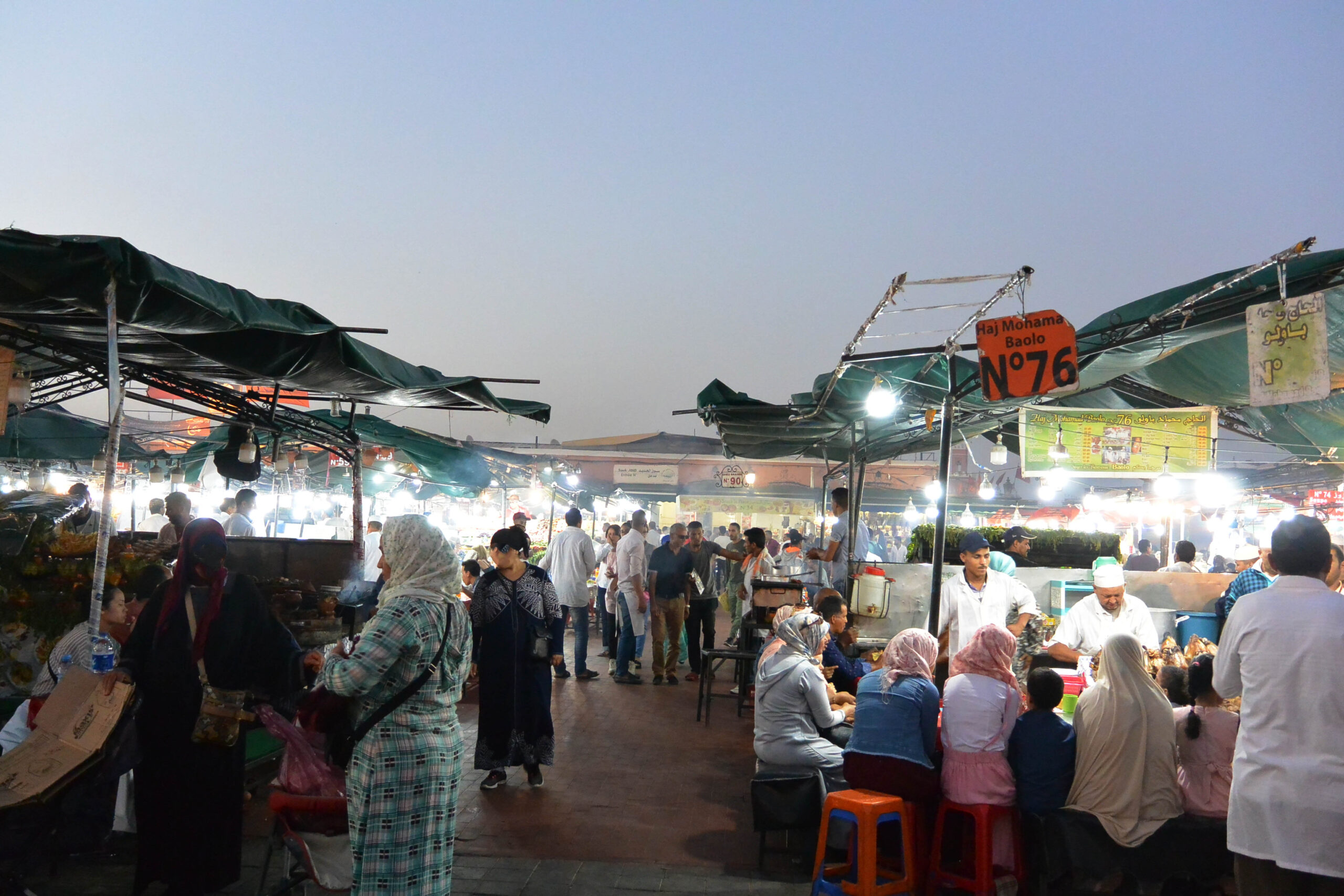
- arrow_back Home
- keyboard_arrow_right Moroccan Food

Moroccan Cuisine : A Flavorful Journey through Spices, Traditions, and Culture
Moroccan Cuisine : A Flavorful Journey through Spices, Traditions, and Culture! 🇲🇦
Moroccan cuisine is a rich tapestry of flavors, textures, and colors, making it one of the most celebrated in the world. With influences from Arab, Berber, Mediterranean, and Andalusian cultures, Moroccan dishes offer a unique and unforgettable culinary experience. This post will guide you through the most iconic Moroccan foods, spices, and cooking traditions, so you can truly savor the essence of Morocco. 🌍✨
🌿 Moroccan Cuisine
Moroccan food is a perfect balance of sweet, savory, spicy, and aromatic. Here are the essential ingredients that form the backbone of Moroccan cuisine:
- Spices: Moroccan dishes are known for their unique use of spices. The famous ras el hanout 🌶️, a blend of up to 30 spices including cumin, cinnamon, and coriander, adds depth and warmth to any dish. Other spices include saffron (adding a golden hue), ginger, and paprika.
- Olive Oil and Olives: Olive oil is the main cooking oil in Moroccan cuisine, lending a smooth, rich flavor to dishes. Olives 🫒, grown widely in Morocco, are often added to tagines and salads.
- Dried Fruits and Nuts: Apricots, raisins, and dates add a touch of sweetness to many Moroccan dishes, while almonds, walnuts, and pistachios give a delightful crunch.
- Fresh Herbs: Parsley, cilantro, and mint 🌿 are widely used, adding a fresh taste to salads, tagines, and mint tea.
- Lemon Preserves: Known as l’hamd marakad 🍋, preserved lemons are a Moroccan specialty that brings a tangy and salty punch to tagines and salads.
🍲 Must-Try Moroccan Dishes
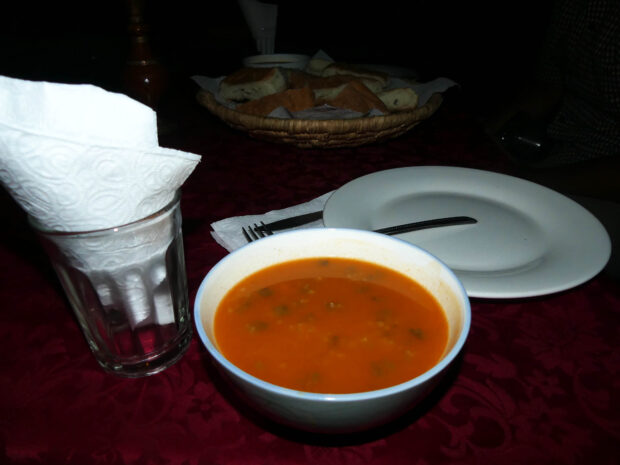
If you visit Morocco, here are some must-try dishes that truly showcase the country’s culinary expertise:
- Tagine 🫕 Named after the traditional clay pot in which it’s cooked, the Moroccan tagine is a slow-cooked stew of meat (often lamb or chicken), vegetables, spices, and sometimes fruits. Flavors meld together as the dish is cooked over low heat, creating tender and flavorful meals. Couscous 🍛 Couscous, Morocco’s national dish, is typically made on Fridays as a family meal. It consists of steamed semolina grains topped with a savory stew of meat and vegetables. Often served with a hearty broth, it’s a communal dish that brings families together.
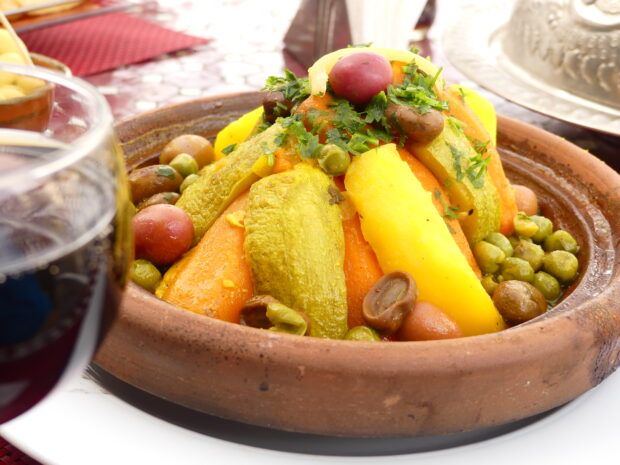
- Harira Soup 🍲 Harira is a tomato-based soup made with lentils, chickpeas, lamb, and a blend of spices, often enjoyed during Ramadan. With a hearty, warming flavor, it’s also popular year-round, especially during chilly evenings.
- Bastilla 🥧 Bastilla is a flaky pastry filled with savory and sweet fillings. Traditionally made with pigeon, modern versions use chicken or seafood. The mix of spices, almonds, and a hint of cinnamon wrapped in delicate layers of pastry is a delightful experience.
- Rfissa 🍖 Rfissa is a comforting dish made with slow-cooked chicken, lentils, and fenugreek, served over a bed of steamed dough layers or msemen (Moroccan flatbread).
🥗 Moroccan Salads and Appetizers
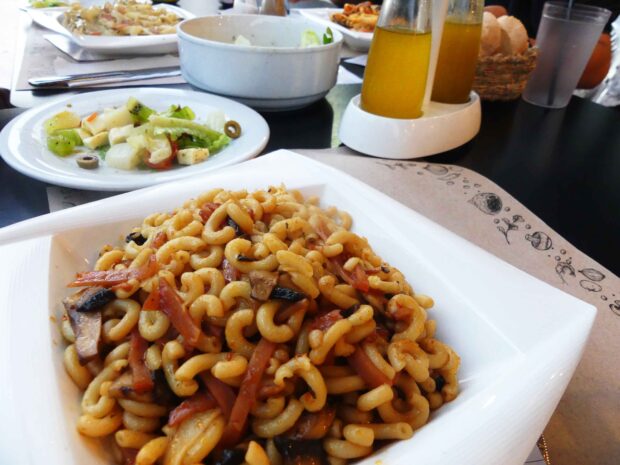
Moroccan meals often begin with a variety of salads and small plates:
- Zaalouk: A smoky eggplant and tomato dip with garlic and spices, perfect for scooping up with bread.
- Taktouka: A colorful pepper and tomato salad, seasoned with paprika, garlic, and olive oil.
- Carrot Salad: Sweet and spicy, often prepared with cinnamon, orange juice, and a hint of chili.
🍬 Sweets and Desserts
Moroccan desserts are influenced by the country’s use of dried fruits, honey, and nuts:
- Chebakia: A sweet, flower-shaped pastry coated in honey and sesame seeds, traditionally made during Ramadan.
- Ghriba: Crumbly cookies with almonds, peanuts, or coconut, popular in celebrations.
- Baklava: Layers of flaky pastry with nuts and honey, reflecting the Middle Eastern influence in Moroccan sweets.
☕ Mint Tea Ritual – The “Moroccan Whiskey” 🍵
No Moroccan meal is complete without mint tea! Known as “Moroccan whiskey,” this refreshing drink is made with green tea, fresh mint, and sugar. It’s more than a drink; it’s a ritual of hospitality. Tea is poured from a height to create bubbles, showcasing the tea maker’s skill and ensuring a perfect blend of flavors.
👨🍳 Traditional Cooking Methods
Moroccan cuisine is unique due to its traditional cooking methods:
- Tagine Cooking: Slow-cooked dishes made in a conical clay pot, retaining the flavors and nutrients of the ingredients.
- Mechoui: A whole lamb roasted over a fire, seasoned with cumin and salt, often served at celebrations.
- Open-Fire Bread Baking: Freshly baked khobz (Moroccan bread) is often baked in communal ovens, creating a perfect crispy crust and soft center.
📸 Top Instagram-Worthy Moroccan Dishes
Morocco’s dishes are not only delicious but also incredibly photogenic. Here are some top picks to add to your Instagram feed:
- Colorful Tagines: The vibrant colors of vegetables and meats against the rich sauce make for a picture-perfect shot.
- Couscous Platters: The abundance of vegetables, meat, and steamed couscous creates a beautiful, colorful display.
- Mint Tea with a View: Capture the Moroccan tea ritual with a background of cityscapes, riads, or gardens.
🛍️ Where to Experience Moroccan Cuisine
If you’re traveling to Morocco, be sure to visit local souks (markets) to buy spices, sweets, and traditional ingredients. Many cities, especially Marrakech, Fez, and Casablanca, offer food tours where you can experience Moroccan dishes prepared by local chefs. Restaurants range from street food stalls to elegant riads, giving you a taste of Moroccan hospitality at its finest.
In Summary
Moroccan cuisine is an exciting journey through flavors and textures, deeply rooted in history and culture. From slow-cooked tagines to refreshing mint tea, each dish tells a story of tradition, hospitality, and passion for flavor. If you’re a food lover or traveler, Moroccan cuisine is a must-try! 🌍❤️
Search in this site
Categories
-
Latest news
- Marrakech to Merzouga desert tour : The Ultimate Guide
- Discover the Magic of Moroccan Vegetable Tagine 🥕🍅✨
- The Ultimate Guide to Moroccan Wedding Caftans: Traditions, Styles & Modern Trends 👰♀️✨
- Traditional Moroccan Clothing: What to Know 🇲🇦👗✨
- 15 Exciting Things to Do in Safi Morocco: Your Complete Travel Guide 2024 🇲🇦
About us
At Morocco Visitor, we understand that every traveler’s needs are different. That’s why we’ve created a variety of resources to help you tailor your trip to your preferences.
Tips
No results
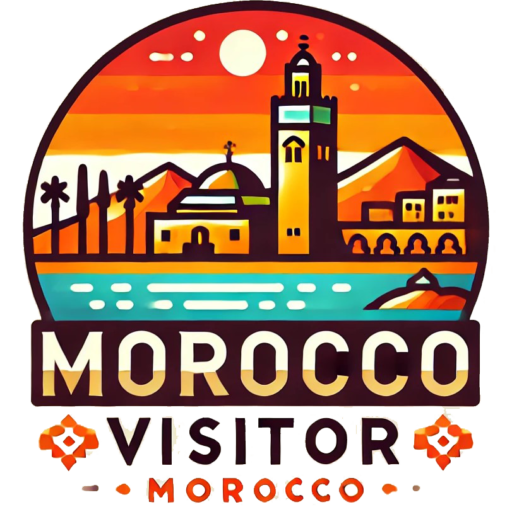


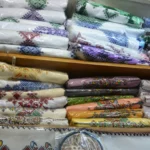
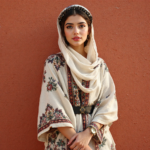
Be the first to leave a comment